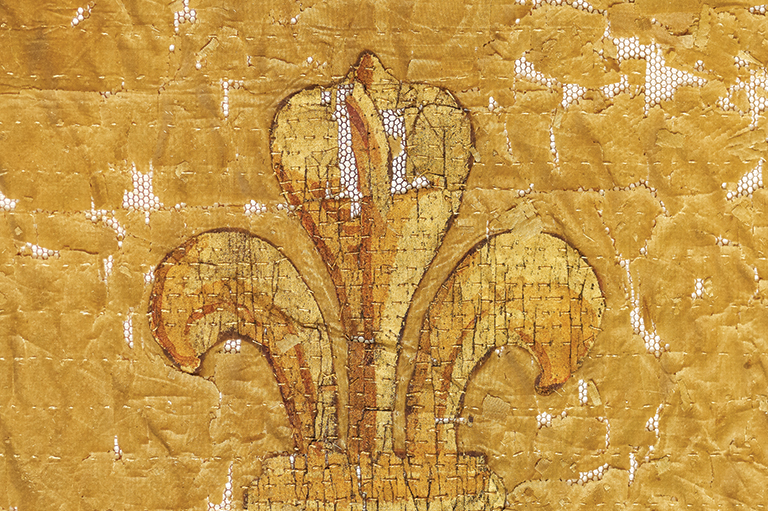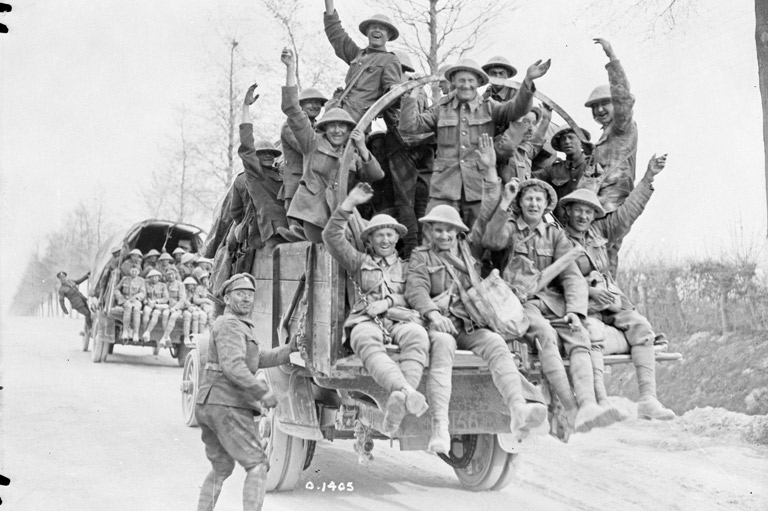Operation Habbakuk: "Professor" Pyke's Secret Weapon
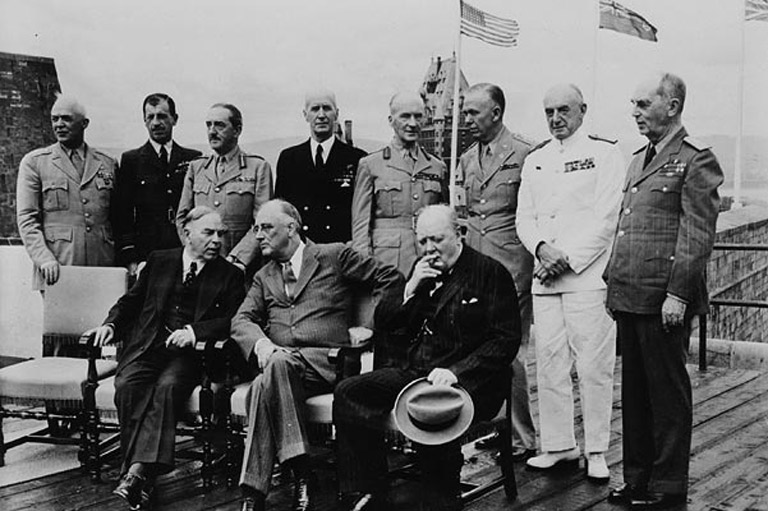
“Necessity is the mother of invention.” Never is this more true than in wartime, as each side seeks new weapons that will turn the tide or counter some advantage held by the enemy. In such desperate times unusual ideas are given serious attention. For much of 1943 Canada’s National Research Council and its head, Dean C.J. Mackenzie, were preoccupied with the strangest idea of all — the plan of eccentric Englishman Geoffrey Pyke to construct immense warships out of ice.
A combination of circumstances provided a climate in which such a seemingly ridiculous idea gained the amount of attention it ultimately did. One factor was the desperate shortage of aircraft carriers facing the Allies in 1942, ships required to confront the German U-boat menace and to participate in the eventual invasion of Europe. If “bergships,” as Pyke called them, could be built cheaply and quickly, they would be of immense strategic value.
High level support was required if Pyke’s scheme was to be given resources adequate to develop it. Here he was fortunate in the character of his boss, Lord Louis Mountbatten, Chief of Combined Operations. It was the role of Combined Ops to develop new weapons and Mountbatten brought to the job, in the words of biographer Richard Hough, an “ingenious, curious, technical, inventive and ever-open mind … Nothing was beyond consideration; it was a characteristic that he shared with Churchill, and a factor in Churchill’s decision to give him this job.” Pyke’s visionary idea won their enthusiastic support, despite the opposition of more prosaic scientific and military minds who dismissed it as nonsense.
Who was Geoffrey Pyke? Little remembered today, he was hailed by the London Times at his death in 1948 as “one of the most original if unrecognized figures of the present century.” To Mountbatten he was the “most unusual and provocative man I have ever met.” Always oblivious to his personal appearance, he looked, with his glasses, goatee and habitual sloppy dress, like the eccentric genius he was — a perfect example of Hollywood typecasting.
Born in London in 1894, his life was distinctive from childhood. When his father died his mother informed him that he was now the head of the household. He was five years old at the time. Though he had a natural bent for science he read law at Cambridge but never completed his degree.
His unique approach to life became evident during the First World War. He entered Germany in the guise of an American salesman, intending to send dispatches to a British newspaper. He was quickly captured and imprisoned in a camp, from which he later escaped — after minutely studying the habits of his guards — making his way to Holland.
In the interwar period he worked for a magazine, made and lost a fortune on the commodities market, set up an experimental school for children based on the latest psychological and educational theories, and tried to organize aid for the Loyalists opposing Franco during the Spanish Civil War. Then in the summer of 1939 he sent a team into Germany to conduct a clandestine public opinion poll which he believed would show that the German people did not want war. The results would then be sent to Hitler. This imaginative scheme had to be aborted in late August when war became imminent.
Following the outbreak of war Pyke tried to interest various government departments in his ideas, including the conduct of further secret polling, to no avail. He did, though, win the support of Leo Amery, Secretary of State for India, who became something of a patron. His moment came in March 1942 with Mountbatten’s appointment as head of Combined Ops, which quickly became a haven for unusual and original thinkers. He was recommended to Mountbatten by Amery and was taken on staff.
At the end of September Pyke sent Mountbatten a description of a project to which he gave the code name “Habbakuk.” This was a slight misspelling of the Biblical book of that name — Habakkuk — one verse of which reads: “For I will work a work in your days, which ye will not believe, though it be told you.” Succinctness was not one of Pyke’s virtues. The document he presented the busy Mountbatten was 232 pages in length. More than a mere technical outline of his plan, it was a poetic description of the wonders his “bergships” would accomplish.
The construction of these ships was based on Pyke’s experiments with ice, during which he found that the addition of other materials, such as particles of wood, increased the strength of ice immensely. By adding wood pulp to water and freezing it he created a substance, named pykrete, which had amazing properties. Not only was it very strong, the wood pulp acted as an insulator that inhibited melting. Only a small amount of energy was thus required to keep it frozen.
Based on this, Pyke posited huge aircraft carriers built entirely of pykrete, unsinkable and virtually invulnerable to attack. Inside their hollow hulls would go freezing plants to maintain them, as well as living quarters and work space. Pyke also foresaw vast freighters whose cargo would be unloaded by carving a hole in the side and sliding it out onto ice barges. The hole could then be frozen shut again. When no longer required, the ships could simply be left to melt gradually away.
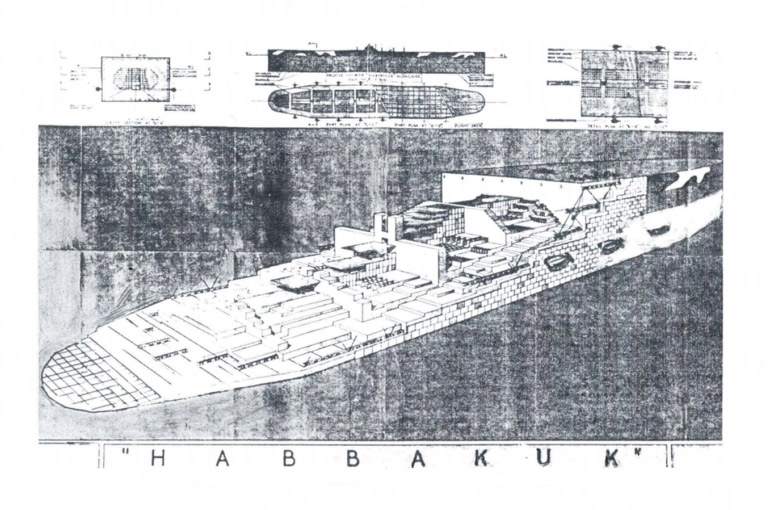
Fleets of bergships would assault enemy ports, launching waves of bombers against them. Troops would follow in ice landing craft shaped like huge Italian gondolas. Pyke then proceeded to outline detailed plans for using his bergships to invade Italy, Japan and Germany. His memorandum reads like science fiction, yet the basic idea was taken seriously by Mountbatten and then by Churchill.
The latter, indeed, became an enthusiastic advocate of the project. In December 1942 he sent a memo to the Chiefs of Staff demanding urgent action. Though modestly admitting that he wasn’t familiar with the physical properties of ice, he stressed that the advantages of Pyke’s bergships “are so dazzling that they do not at the moment need to be discussed. There would be no difficulty in finding a place to put such a “stepping stone” in any of the plans of war now under consideration.”
The obvious place to build ice ships was in Canada, and the obvious body to undertake the necessary preliminary studies was the National Research Council, then under the direction of Chalmers Jack Mackenzie, acting head in the absence overseas of General Andrew McNaughton, the soldier-scientist commanding the Canadian army in England. One of Canada’s most distinguished men of science, Mackenzie was privy to the top scientific secrets of the war, including the atomic bomb project. It is clear from his diary for the first half of 1943 that he devoted a major amount of his time to Habbakuk during a period when the atomic bomb was also a major responsibility.
On 8 January 1943 Mackenzie was informed by his liaison officer in London that the Canadian government would shortly be requested to do research on Habbakuk. “All facts regarding properties of ice on large scale,” he telegrammed, “resistance to explosives, types of insulating materials, most economical size of ice blocks etc. are desired this winter so that construction may be started next November if results prove satisfactory.” Three days later Mountbatten asked High Commissioner Vincent Massey to place the matter before his government on an urgent basis. This was done and the Canadian authorities naturally agreed to a British request with such high level support.
Mackenzie recorded his initial scathing reaction in his diary on 14 January:
This is another of those mad, wild schemes that we come in contact with frequently and while one cannot say that it is not practicable I am quite sure that if it were suggested in normal circles here we would not have the ghost of a chance of getting it before even a minor official, but it can start with a couple of crazy men in England and get Churchill’s attention and the attention of the highest people in Canada and even of the P.M. here. At any rate we will go on on some work on the project but what I object to in all of this scheme of things is … that apparently only the wildest kind of scheme can get before P.M.
Despite his feelings Mackenzie had no choice but to co-operate, and he did so energetically. On the 26th he saw Finance Minister J.L. Ilsley, obtaining an immediate grant of $150,000 and agreement to spend a lot of money quickly without going through normal procedures. The next day he saw C.D. Howe, a key figure as Minister of Munitions and Supply, who proved “very interested” in the project and agreed to give it the highest priority. He spent the last few days of the month out West where he arranged for two major projects to be started at Banff and Jasper as well as a research program at three Western universities. “At least,” he felt, “we would have a large number of intelligent and experienced people working on the project which should give results.”
With winter well advanced time was of the essence, as he informed his liaison man, Laidlaw, in London, reporting that he had secured full support from the armed services, government departments and private companies. Upon his return to Ottawa he found that plans were drawn up, orders placed and a great deal of material already on its way west. This he found “a most extraordinary performance in wartime.”
The British agreed. They were, Laidlaw wrote on 9 February, “greatly impressed and gratified by the vigour with which you are proceeding with Habbakuk.” Churchill, he noted, “is taking a violent and continuous personal interest.” Meanwhile the work continued at a rapid pace, with Mackenzie coming to feel that the identification of practical difficulties confronting the project was the most that could be expected in the time available.
Those involved with Habbakuk tended to fall into two camps, the enthusiasts and the complete sceptics. Another of Mackenzie’s men in London, Allen Shenstone, was so impressed with the operational importance of the bergships that he urged the setting up of an organization under one man with full decision making authority to push the project through. That, Mackenzie responded, was more or less the situation that existed, as he had devoted most of his time for two months to Habbakuk “as no one else could carry sufficient authority to get necessary action and decisions.”
High Commissioner Massey was also an enthusiast, though he realized from the reports of the scientists that the obstacles were formidable. “Building sites must be selected,” he wrote Mountbatten on 20 March, “which can provide cold weather, deep water, railway facilities and adequate labour, and on the basis of our present knowledge the organization must apparently procure many hundred thousand tons of pulp in competition with the newspapers. It would appear that the possibility of success this year will soon vanish entirely.”
Mountbatten passed this along to the prime minister, eliciting a further Churchillian rumble addressed to Mackenzie King, asking for his “vehement support.” Mountbatten also sent Pyke and Professor J.D. Bernal, another member of his staff, to Canada to check out the work being done and ensure that King was fully cognizant of the project and its importance.
Mackenzie found them “a queer looking team” but was obviously fascinated by Pyke, who in appearance and manner was virtually a caricature of the eccentric Englishman. A lengthy passage in his diary reveals a grudging respect for Pyke’s intelligence despite his maddening peculiarities:
All together he is a most unusual type and most people think he is absolutely mad. He is not mad. He thinks in a most unorthodox way. The strange thing is that he brings to light a lot of confused thinking which has become conventional. He never does anything because other people do it. He lands in this country without any gloves and with only a light raincoat to embark upon a trip into the Arctic weather. When we were in the mountains he went skiing in the most grotesque outfit — a little hat on the top of his head with his muffler and raincoat and a pair of spats … He reads all night and sleeps all day. He has moments of what amounts to intellectual intoxication when he is seized with his ideas. He has now brought off for Mountbatten a couple of good ideas and if Habbakuk comes off it will be another triumph.
Travelling with Pyke is like travelling with a small child. You turn around and he is not there and then you worry that he is going to miss the train and he finally turns up at the last moment when all is about to be lost.
Along with Churchill’s missive to King came an official request from the Dominions Office to have the Canadian government assume responsibility for the project and appoint an engineering staff. Mackenzie thought this a “sizeable order” and found it “most extraordinary the casual way in which projects of large magnitude get requested and presented.”
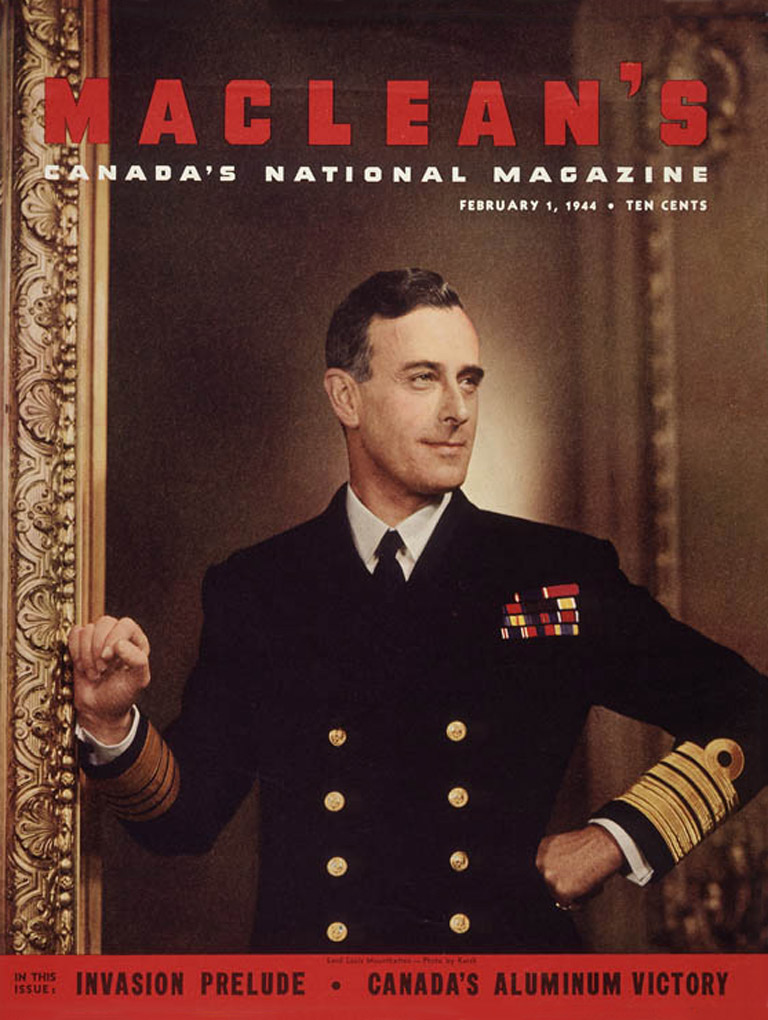
Pyke must have been on his best behaviour when he and Bernal saw Mackenzie King on 29 March, for that inveterate diarist had little to say about their meeting. His support for the project certainly lacked the vehemence that Churchill sought though he did find it “far from fanciful; likely to be a real service. Pretty expensive and costly experimentation. Was greatly interested at what has already been achieved. The two experts spoke in the highest terms of what our men have accomplished in their experiments thus far.”
As the work progressed Mackenzie became increasingly aware of the great difficulties involved, particularly in regard to construction. He concluded that their timetable was unrealistic and that in fact it was possible that “the thing can never be built.” By the end of April he was also fed up with the two Englishmen, insisting that they “come down to earth and get down to matters of design and stop talking about details.… I have insisted that they get immediately down to the drafting table, get out designs, and make calculations of quantities, time, total man hours involved, etc.”
Pyke must have been on his best behaviour when he and Bernal saw Mackenzie King on 29 March, for that inveterate diarist had little to say about their meeting. His support for the project certainly lacked the vehemence that Churchill sought though he did find it “far from fanciful; likely to be a real service. Pretty expensive and costly experimentation. Was greatly interested at what has already been achieved. The two experts spoke in the highest terms of what our men have accomplished in their experiments thus far.”
As the work progressed Mackenzie became increasingly aware of the great difficulties involved, particularly in regard to construction. He concluded that their timetable was unrealistic and that in fact it was possible that “the thing can never be built.” By the end of April he was also fed up with the two Englishmen, insisting that they “come down to earth and get down to matters of design and stop talking about details.… I have insisted that they get immediately down to the drafting table, get out designs, and make calculations of quantities, time, total man hours involved, etc.”
Mackenzie clearly felt it was his job to confront Pyke’s visionary scheme with a hard dose of reality. At the beginning of May he again saw C.D. Howe, who appointed him his representative on all Habbakuk matters and agreed that a cautious approach was best. The Canadian government would not make a commitment one way or the other to Habbakuk until the researchers had reached a firm conclusion. Three days later, on 4 May, Mackenzie told an unhappy Bernal that the schedule was impossible; a Habbakuk, as the bergship itself was now being called, could not be built by the spring of 1944 as planned.
Shortly afterwards Mackenzie left for England, a long-awaited trip during which the Habbakuk project was but one of a number of items on his packed schedule. On the tenth he attended a dinner party at the High Commissioner’s where he told a disappointed but philosophical Mountbatten that 1944 was out of the question. This injection of a dose of realism was generally welcomed, he believed, and “everyone felt that for the first time the entire project had been brought down to earth.” The Deputy First Sea Lord, Sir Charles Kennedy-Purvis, said it was “the first sense he had heard re Habbakuk since it started.”
Mackenzie found that scepticism about the project was widespread. Several scientists he talked to were “obviously relieved to find we had such sound views and I think our Canadian stock is at a high level.” This support buoyed Mackenzie, whose own scorn was deepening. On the nineteenth he attended a meeting of Combined Operations chaired by Mountbatten; he was not impressed with Bernal, who “as usual stated opinions as if they were facts”, nor with Pyke who kept grinning like an imbecile. “I can’t imagine such a situation happening in Canada,” he fumed, “i.e. a royal Prince with two mad advisers holding out against the entire weight of sound professional opinions of a country.”
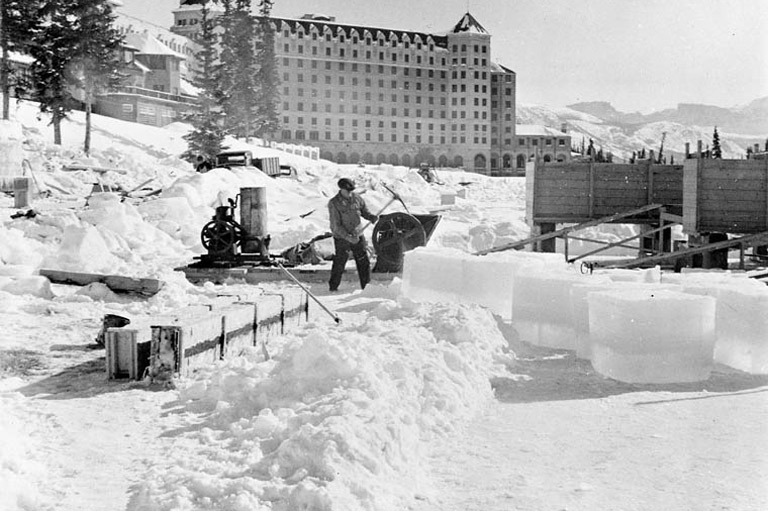
Five days later he attended a second meeting where he “blew up” when Bernal had the gall to claim that all the major problems had been solved with only minor matters remaining. He settled down after the rest “agreed on my statement of the situation.” He received further reinforcement for his views — if any was needed — from General McNaughton, who told him that Mountbatten was a “wild man” and that both he and Churchill had backed “some very fantastic schemes.” Mackenzie patted himself on the back for not falling prey to “all the seductive advances that can be made by such people.… I think everyone here of sense,” he smugly concluded, “felt we in Canada were going to lend our support to a foolish proposition and they are most relieved that I am standing firm on a very sensible and sound basis.”
Mackenzie needed all his firmness when he attended a meeting on 10 June at 10 Downing Street. Standing up to Churchill was no easy matter, especially when he was clearly annoyed at the inability to keep to the original schedule. Mackenzie was not impressed by the prime minister, who he felt was “a dictator who does not take objections kindly,” nor by his advisors, who despite their own dislike of the project, would criticize only details. When it was his turn to speak, Mackenzie bluntly stated that it was impossible to meet Churchill’s wishes in the matter. The upshot was another committee to investigate the use of other materials in building a Habbakuk.
Churchill’s bulldog tenacity was never better exemplified than in his committment to this project. It had captured his imagination and he was unwilling to let it fall by the wayside without a struggle. The next step was to enlist the support of the Americans, which he proposed to do at the Quebec Conference held at the end of August 1943. Here he conferred with Roosevelt — with Mackenzie King along for the photo opportunities — while the British and American Chiefs of Staff also met. The upshot was a laconic statement in the official proceedings agreeing to the construction of a section of a Habbakuk and the continuation of studies necessary for the completion of a full-sized ship, to be overseen by a joint British-American-Canadian board. Behind that decision lay a farcical scene more reminiscent of a Peter Sellers movie than the deliberations of the highest Allied political and military authorities.
As Churchill recounted in his war memoirs, two blocks were wheeled into the conference room, one made of ice and one of pykrete. The American General H.H. Arnold was invited to attack them with a chopper. He easily split the ice but made scarcely a dent on the pykrete, receiving quite a jarring in the process. Mountbatten then pulled out a revolver and blazed away. The ice shattered but the bullet that struck the pykrete ricocheted. There are different versions of the outcome. One story has it that the bullet narrowly missed a British officer, another that it nicked the leg of Admiral Ernest King of the American Navy. Horrified officers waiting outside the room wondered who was shooting at whom.
Despite the performance of the pykrete and the creation of the board, this was really Habbakuk’s last gasp. Mackenzie had lunch with Mountbatten in Quebec and found him as keen about the project as ever and convinced that the Americans were impressed. In fact, the Combined Chiefs of Staff had determined that the construction of a full size Habbakuk was only feasible by extraordinary effort and the stoppage of work on other essential projects, which could not be justified. The Americans were not enthusiastic and were pressed into agreeing to as much as they did by Churchill’s relentless pressure.
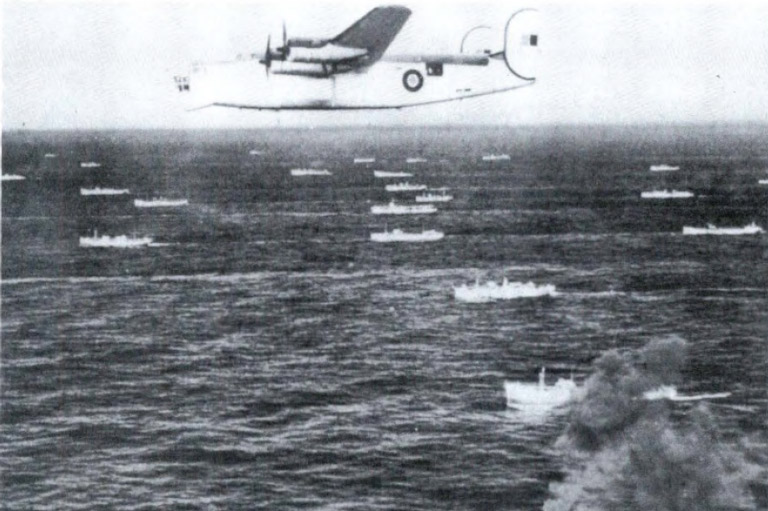
As Mackenzie noted on 11 September after talking with Bernal in Washington, the Americans only went back on their original view that “the thing was no good” after they were “cajoled and bullied and worn out by Churchill.” He was pleased to hear that Admiral King was “very tough” and had exploded as Mackenzie had in England “at the suggestion that all the major problems were solved.”
That was far from the case, as Mackenzie had made clear in a report to C.D. Howe four days earlier. He gave the minister a summary of the work that had been done in Canada, an impressive accomplishment in the circumstances. Research had been carried out at three Western universities, Jasper and Lake Louise and at three NRC labs in Ottawa, resulting in the obtaining of “much useful scientific and technical data.” The Montreal Engineering Company had been hired to study the engineering and construction problems and work on refrigeration had been done at the National Harbours Board in Montreal.
Useful experimental work on the nature of ice had, in fact, been carried out. Perhaps most interesting was the construction of a model on Patricia Lake, near Jasper. Made of ice, not pykrete, it was 60 by 30 by 19 ½ feet and was kept frozen right through the summer months. As C.D. Niven of the NRC noted after the war, the model did not deteriorate at all until the machinery was removed; based on experiments with pykrete, eventual melting would have theoretically been much slower if that material had been used.
As a result of all this effort, Mackenzie reported, several conclusions could be drawn, foremost of which was the impossibility of building a Habbakuk by the following spring. There were, he continued, no technical or scientific reasons why it could not be built; the essential difficulties were in engineering design and construction. However, it could not be built cheaply, the cost estimates being, in fact, two to three times greater than the original British estimates. Construction could not be undertaken by Canada alone “without serious interference with existing war programs.” It was only feasible to proceed in cooperation with the U.S. “if the tactical and strategic needs indicate that Habbakuks in some form should be built.” The Combined Chiefs had already decided that was not the case.
Howe agreed that Canada had gone as far as possible with Habbakuk and that the government “will not wish to be involved in further extensions of this project … Our war programme has been stretched to its limit, and we are moving in the direction of reducing the programme in conformity with our dwindling manpower resources.”
The joint board was appointed and began meeting but it was soon apparent that Habbakuk was dead. The Canadian members were Air Vice-Marshall G.V. Walsh of the RCAF and Construction Captain A.W. Harrison of the Royal Canadian Navy. They were not fully aware of how involved Canada had been to that point, as the project had been treated as top secret, a fact that Harrison complained about to the Chief of Naval Staff. He also expressed awe at what was involved in the building of a Habbakuk:
In the sketch design phase it is a vessel 2,000 ft. long by 300 ft. wide by 150 ft. draught and 50 ft. freeboard and has a displacement of over 2,000,000 tons. It is built primarily of Pykrete and one vessel will require something of the order of 300,000 tons of wood pulp. It will have to be built in a fairly isolated spot in sheltered water where there is sufficient depth of water to take the vessel as she is being built. I understand it will take something like 6 to 8,000 men a year to build. I should imagine the cost will be anything from 50 to 100,000,000 dollars.
By comparison, the largest aircraft carrier of the time was approximately 1,000 by 113 feet.
The first meeting of the board was held on 12 October 1943. The members determined that they required from higher authority a clear definition of the military objectives of Habbakuk and of the operational characteristics necessary to fulfill them. Higher authority clearly had other things on its mind; they were still waiting to hear at the end of the year and felt themselves to be in an impossible position. Finally the charade was ended with the official dissolution of the board on 1 March 1944.
There was no chance that the project would proceed once it became apparent that the theoretical benefits of Pyke’s bergships — speed and cheapness of construction — were unobtainable. There was no advantage to building ships out of pykrete when conventional steel ships could be produced more quickly and at lesser cost. The project would have collapsed in the summer of 1943 except for Churchill’s obsessive attachment to it.
Pyke’s idea was a fascinating but ultimately impractical one that only got as far as it did because of the top level support he attracted. Habbakuk distracted Mackenzie’s attention from more important projects for a period of several months and, in the opinion of W.E. Knowles Middleton, author of a history of physics at the NRC, “was destined to waste an uncountable number of valuable man-hours before it was abandoned as impracticable”.
As for Pyke himself, he lost his chief supporter when Mountbatten left Combined Operations in October 1943. The staff was reduced and Pyke was transferred to the Admiralty where there was little real work for him. After the war he worked for a research group preparing a report concerning the planned National Health Service and achieved a brief notoriety through broadcasts of his ideas concerning the shape of the future on the BBC. Then in February 1948 he took his own life, ending the career of a remarkable, if eccentric, thinker who had an unexpected effect on Canada’s scientific effort during the Second World War.
Themes associated with this article
Advertisement

